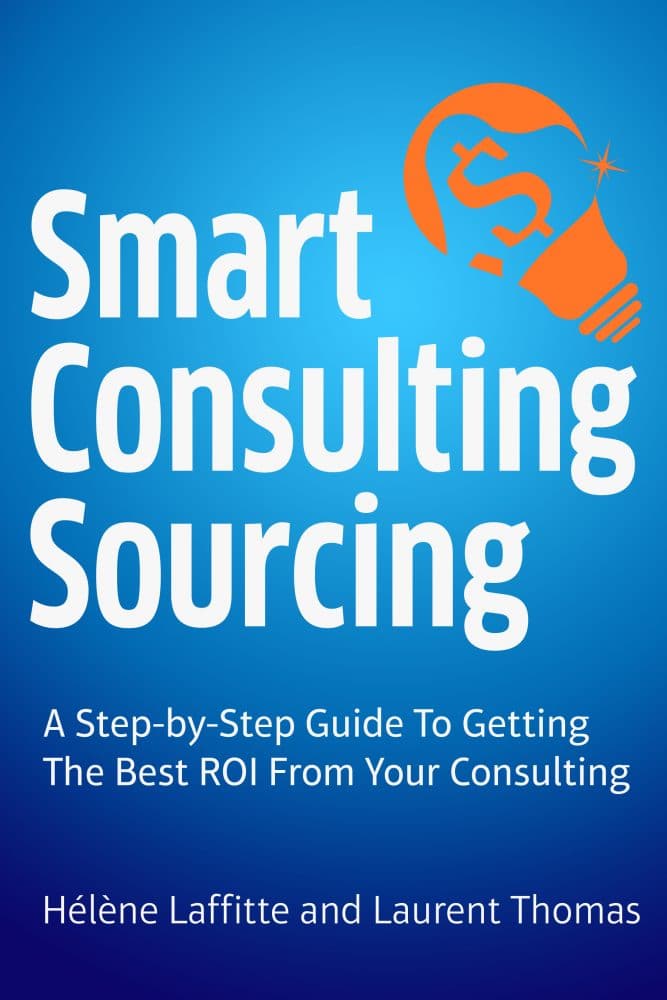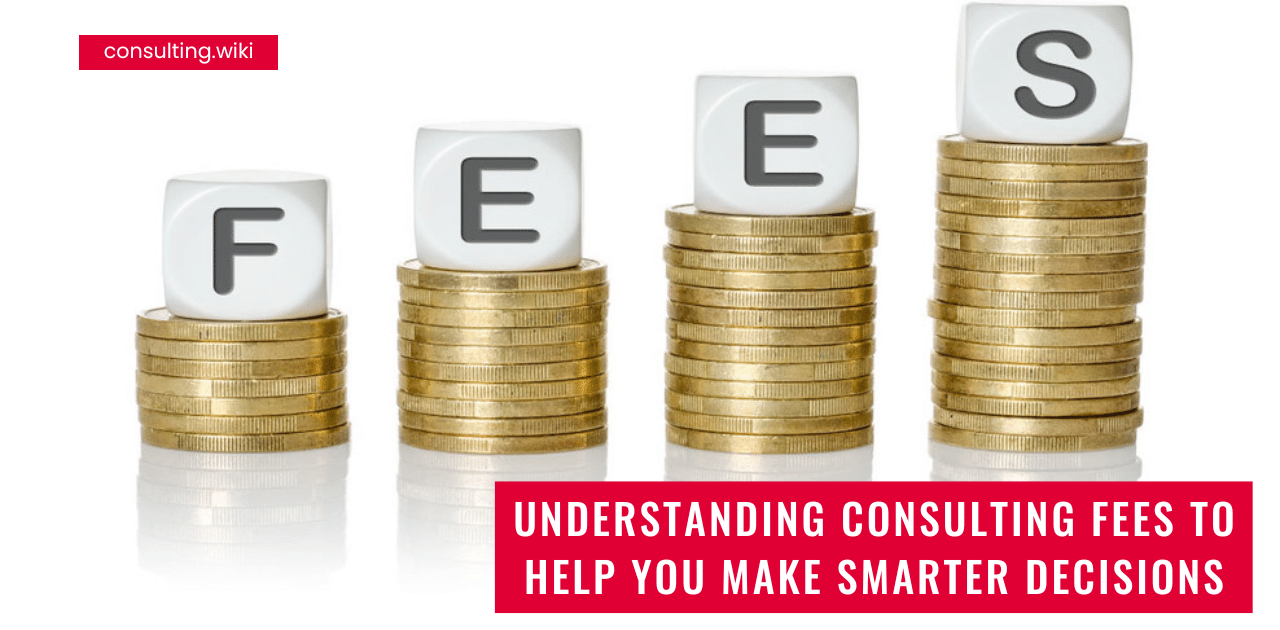
How to Decode the Price of a Project With These 4 Simple Tactics?
All products and services have price and value they create, and that equally applies to Consulting projects designed to solve an issue, generate savings or bring in extra revenues.
Before you start contemplating if the proposals have a price that makes sense to you, let’s have a closer look at how this price is structured. Be careful as the most affordable proposal is not always the one that has the lowest face value
How to Decode the Price of a Project With These 4 Simple Tactics?
Get crystal clear on what’s included in the price
The price of a project depends on the scope, the approach, the timeline, and the resources used in the project. There are three elements you need to analyze to understand the possible price of the project: the fee structure, the expenses, and the total budget.
1. Understand the Fee structure
Consultants can normally use several fee structures:
- Hourly rate
You will pay per hour. We don’t recommend this fee structure, because it is challenging to control the spending. Besides, it often shows the Consultant can’t or won’t accurately size the project or don’t have enough experience. You will hold all the risks.
However, it might be interesting to go this route if the scope is vague, or the project is very small. Make sure you integrate a soft and/or a hard cap on the hours.
- Flat fee
The Consulting firm commits to deliver the work in a fixed envelope. It is the most common fee structure. Make sure that the fee is not subject to adjustments if they have to change the staffing of the consulting team for lack of performance, or in internal turnover.
- Risk-sharing/Value-sharing approach
The Consulting firm will be paid a variable amount depending on their performance, often calculated as a percentage of savings or income increase. Check the payment schedule to make sure you can withhold a significant part of the fees until the work is completely done.
“The most important distinction between price and value is the fact that price is arbitrary and value is fundamental.” – Phil Town (on stock pricing, for Forbes magazine).
READ ALSO
“Today Open Innovation is part of an interconnected ecosystem where people, organizations, and sectors can nurture inspiration, idea-generation, collaboration, and validation of ongoing iterations all at the same time. “
2. Consider the Other Expenses
Once you have understood the fee structure, take the time to look at the other expenses, such as travel. Some consulting firms apply an automatic 5% on their proposal for phone and copies. Others are using an automatic 30% of the project amount for travel expenses. Make sure you integrate as much as possible of the expenses in the project price. Concerning the travel expenses, we recommend aligning them to your company’s travel policies and include them in your terms and conditions.
When you have identified all the fees in the proposal, define the two or three most likely scenarios on how the project will impact your company. Calculate the fees in each category and each proposal. Make sure all the amounts are indicated in the same currency to facilitate the analysis. Add an estimation of the expenses in the total, in particular, if the conditions between the different consulting firms are extremely different.
If you have questions on the pricing of the proposal, it is the right moment to ask. Try to understand how they structured their price and what their constraints are.
3. Get ready to select your Consultant
Start with assessing the chemistry.
There is one thing you can never judge on paper: how well you will be able to work with the consultants. The ability to deliver on a project is linked to the technical competencies and expertise, but also the attitude of the consultants. Here is a list of useful questions you need to answer before you proceed:
-
What type of personality the partner in charge (the project manager) has?
-
Do you see your project sponsor working with them? Your project manager? Your teams?
-
Do the consultants listen to you? Are they flexible in their approach?
-
Do they demonstrate values that are compatible with yours?
-
Do you think they will have credibility with the upper management?
-
Will they be able to build trust with the main stakeholders?
-
Do you feel the Consultant had a well-balanced approach between the sales and the delivery imperatives?
-
Do you think their posture/personality/culture will have a positive impact on your project?
Proposal revision – give the Consultant a few days when they need to revise the proposal.
Always keep in mind that the goal of that exercise is to get several solid proposals that you could choose from. You want the most promising candidates to produce their best proposal.
During the meetings, you have probably asked for clarifications, and/or modifications. Give the consulting firm a few days to integrate your demands and adjust the price if necessary.
The RFP and the proposal are often the basis for the reception of the project (and potential litigations). You have to make sure that it describes closely the work you expect to be done, and the team you have agreed on.
Check their references.
If you haven’t checked the references yet, now is the right moment to do so. There are several elements that you want to confirm:
-
The references are recent. Ideally, less than 2 years, and in any case, no more than 5 years.
-
The consultants on the proposals worked for the project. In particular, make sure the partner in charge of your project had an active member, if not the project manager, of the project in the reference.
The reference is relevant to your project. The relevance will depend on your criteria. It can be a project in the right industry, the right capability, or with the right approach
4. How to make your final decision
The goal here is objectivity. Some consultants will leave an excellent impression after the pitch because they are brilliant communicators. However, the methodical evaluation of their proposal will end up with a much lower score than expected. The actual value of the proposal is probably somewhere in between. Scoring and ranking the proposals can be an exciting activity, as now we are getting closer to the conclusion.
We recommend building a weighted score where all the criteria are graded on a similar scale, and each criterion has a weight reflecting the level of importance to your project and your company.
The weighting could look like this, depending on your current needs, might include the following dimensions:
-
Quality of Approach – 30%
-
Aligns well with corporate culture/fit – 15%
-
Inspirational, breakthrough thinking; originality – 15%
-
Team expertise – 10%
-
Quality of written proposal and clarity of deliverables – 10%
-
Price – 20%
Once your proposal evaluation matrix is ready, you can start screening and grading the proposals. On each criterion, asses closely every bid and compare it to the rest of the proposals. You can work either criterion per criterion or proposal per proposal.
The proposal analysis is usually a good start, and you can adjust the scores based on the pitches. Then you can start reviewing the elements that are not in the analysis
Consulting sourcing tips

How To Manage the Tail Spend – Our 5 Recommended Practices
Discover effective strategies to conquer tail spend management with our comprehensive guide. Explore five recommended practices that will optimize your procurement process, reduce costs, and increase operational efficiency. Learn how to tackle low-value purchases, leverage technology, streamline supplier relationships, and implement data-driven decision-making. Don’t let tail spend derail your budget and productivity—empower your organization with our expert insights and take control of your procurement today.

Consulting Procurement or Procurement Consulting?
Type Consulting Procurement in your browser and look at the results. What do you find? A list of consulting companies that offer their services to help improve your company’s purchasing and/or sourcing capabilities. But is it the same thing as Consulting Procurement?

7 secrets to always work with the best consultants
7 secrets to always work with the best consultants
Previous Weeks’ issues

Exploring Smart Contracts in Business | This Week in Consulting
In this edition of This Week in Consulting, we’re delving into the nitty-gritty of smart contracts, exploring their evolution, practical applications, and the technical considerations that come with them.

Warehousing Wisdom: Trends, Tactics, and Insights | This Week in Consulting
In this edition of This Week in Consulting, we’re diving deep into the world of warehousing management, uncovering the secrets to success in this high-stakes game.

From Stormy Seas to Steady Waters: Mapping the Path Forward in Global Real Estate | This Week in Consulting
In this issue of This Week in Consulting, we dive deep into the challenges and opportunities that lie ahead in the global real estate industry for 2024.
Choose the best next step for you
Buy the Book
Talk to us
Hélène Laffitte is the CEO of Consulting Quest, a Global Performance-Driven Consulting Platform and author of “Smart Consulting Sourcing”, a step by step guide to getting the best ROI from your consulting. With a blend of experience in Procurement and Consulting, Hélène is passionate about helping Companies create more value through Consulting.







